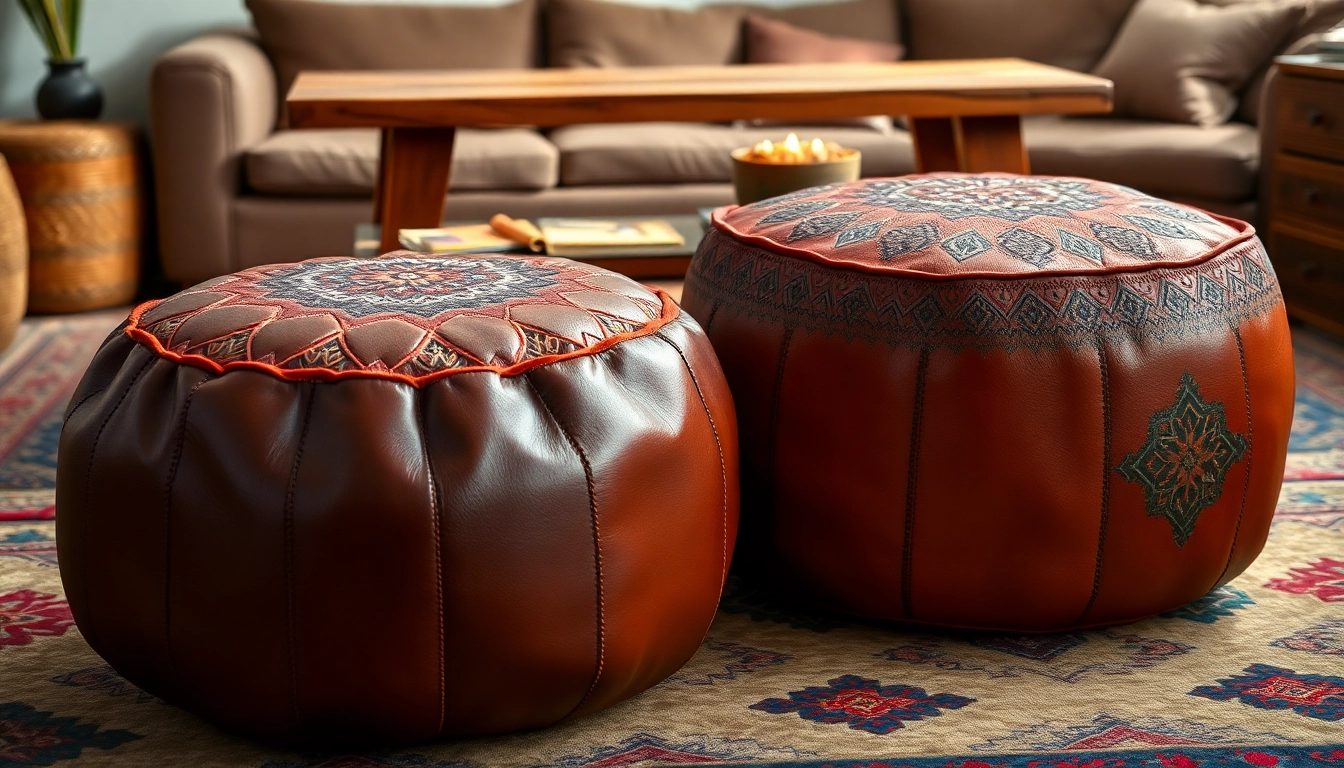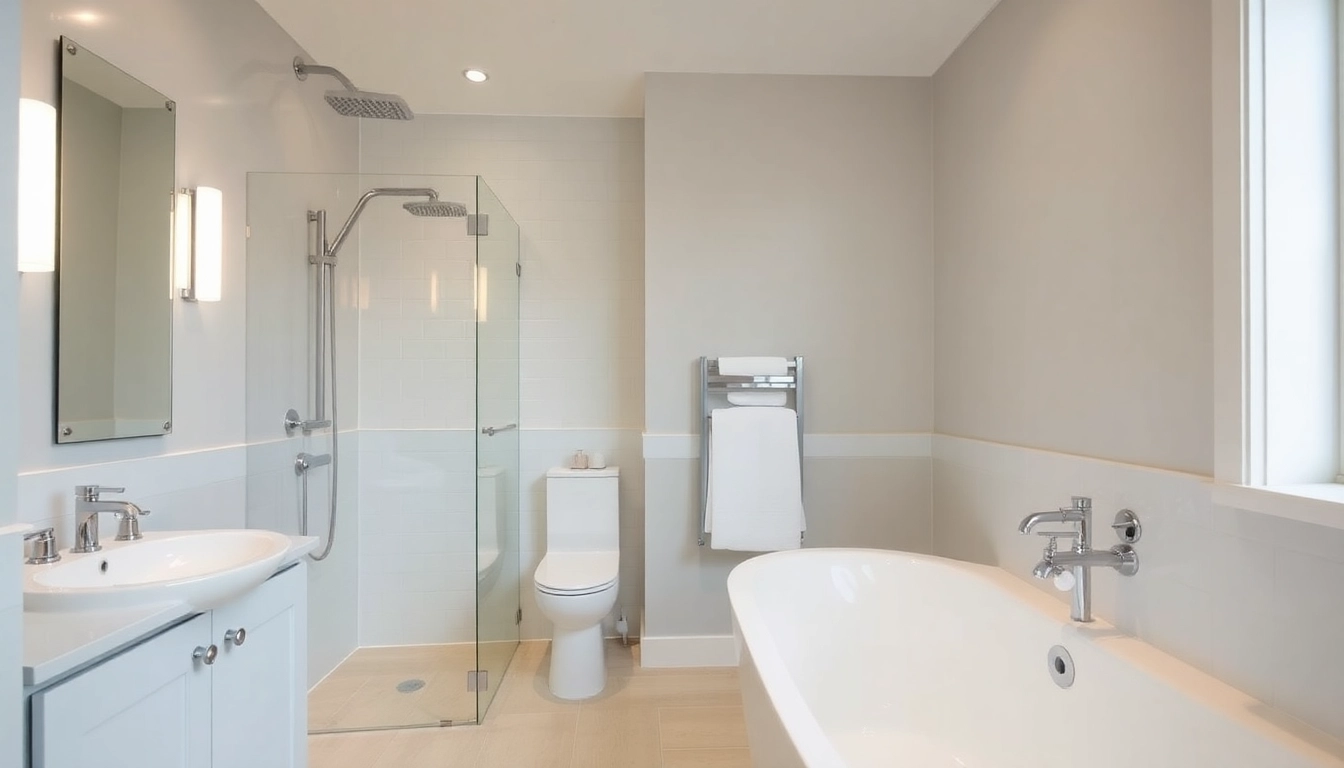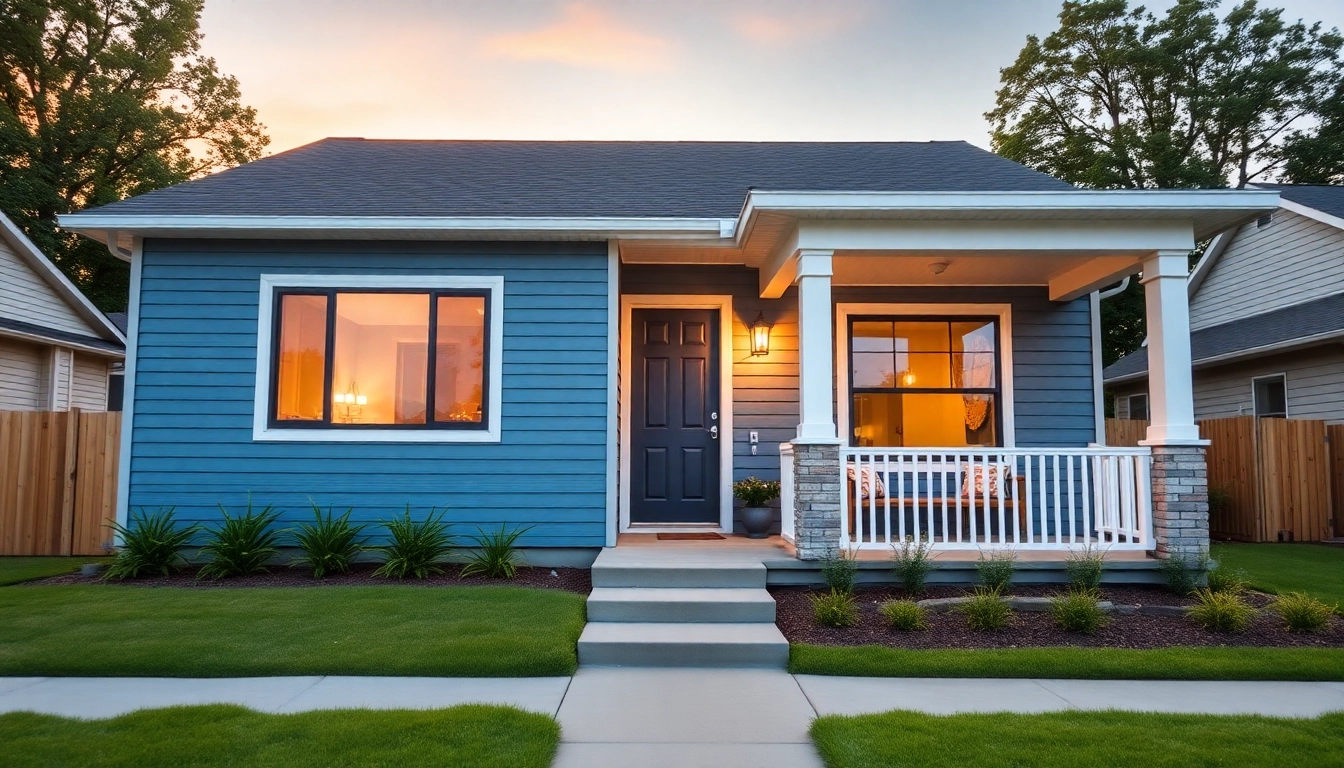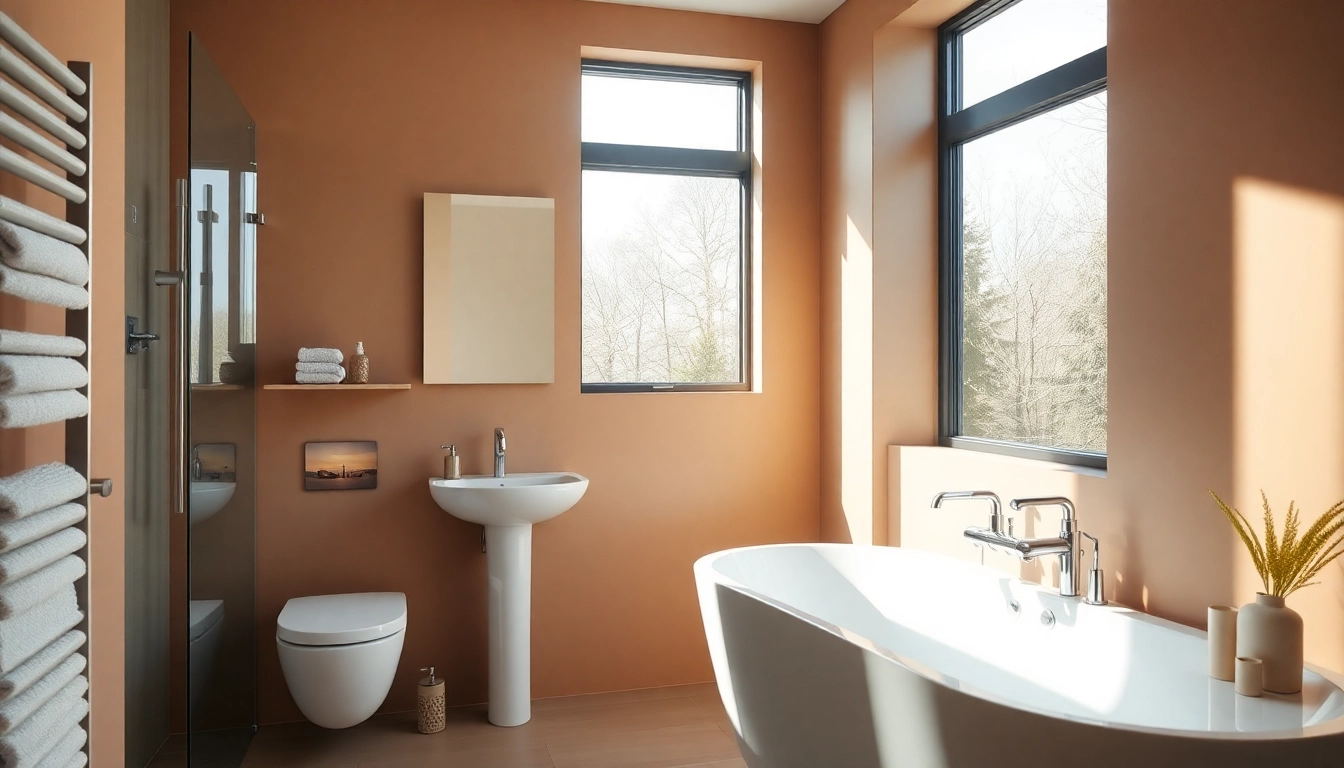What Are Moroccan Leather Poufs and Ottomans?
Moroccan leather poufs and ottomans are more than just decorative furniture pieces; they embody artistry, tradition, and versatility. Hailing from the vibrant markets of Morocco, these furnishings have captivated the world with their unique designs and cultural significance. Crafted by skilled artisans, each pouf or ottoman tells a story, offering both aesthetic appeal and practical use. The famous Moroccan Leather Poufs and Ottomans exemplify this blend of functionality and artistry, making them a favorite among interior design enthusiasts.
Defining Characteristics of Moroccan Leather Poufs
Moroccan leather poufs are primarily made from high-quality leather, often sourced from goats or sheep. This leather is known for its durability, softness, and unique ability to take on vibrant colors through a traditional dying process. Authentic poufs are typically stuffed with natural materials like cotton or wool, providing comfort and structure.
Moreover, the meticulous hand-stitching and intricate embroidery that adorn many Moroccan poufs often feature traditional motifs and patterns, reflecting the rich cultural heritage of Morocco. Most poufs are round, although square variations exist, allowing for diverse styling options in various room layouts.
Variations in Design and Use
The design of Moroccan leather poufs and ottomans varies significantly based on region and the artisan’s creativity. While some designs maintain a classic aesthetic, others embrace modern twists, featuring contemporary colors and patterns.
In terms of use, these versatile pieces serve multiple functions. They can act as comfortable footrests, informal seating for guests, or even side tables for drinks and decor. The adaptability of these poufs makes them suitable for different rooms in a home, from living rooms to bedrooms and even outdoor spaces.
Materials and Craftsmanship Explained
One of the most compelling aspects of Moroccan poufs is the high-quality materials used in their construction. The leather is not only soft but also treated with natural dyes, making the poufs environmentally friendly as compared to synthetic alternatives. Artisans carefully craft each piece, often taking days to complete a single pouf, which showcases the dedication and skill involved in traditional Moroccan craftsmanship.
This attention to detail extends to the stuffing material; many poufs are filled with recycled cotton, making them sustainable options for eco-conscious consumers. The craftsmanship reflects the broader values of Moroccan culture, where handmade items are cherished and celebrated as works of art.
Benefits of Incorporating Moroccan Leather Poufs in Your Home
Integrating Moroccan leather poufs into your living space provides a range of benefits. Not only do they enhance the aesthetic appeal of a room, but they also offer practical solutions for contemporary living.
Versatility in Decor Styles
Moroccan leather poufs can seamlessly blend into a variety of decor styles—whether it be bohemian, rustic, modern, or eclectic. Their unique designs and colors make them eye-catching accent pieces that can elevate any room. For instance, in a bohemian-themed room, a brightly colored pouf can serve as the focal point, while in a minimalist space, a neutral-toned pouf enriches the color palette without overwhelming the aesthetic.
Comfort and Functionality
Comfort is a key benefit of Moroccan poufs and ottomans. Their plush filling allows for maximum comfort whether used as a seating option or a footrest. Since they are lightweight and portable, they can be easily moved around the house to accommodate guests and different activities.
Moreover, their low profile makes them particularly appealing for informal seating arrangements, such as casual gatherings or family movie nights, where traditional seating may not be practical.
Durability and Maintenance Tips
Moroccan leather is known for its robustness. With proper care, these poufs can last for years, making them a worthwhile investment. Regularly wiping them with a soft, damp cloth and applying leather conditioner can preserve the material’s luster and prevent drying or cracking.
In terms of maintenance, it’s essential to avoid placing poufs in direct sunlight for extended periods, as this can lead to fading. Additionally, vacuuming or gently brushing them can keep the pouf looking fresh and clean.
Shopping for Authentic Moroccan Leather Poufs and Ottomans
Shopping for Moroccan leather poufs requires knowledge of what constitutes quality craftsmanship to ensure the authenticity of the product.
Identifying Quality Craftsmanship
When searching for authentic Moroccan poufs, look for several key indicators of quality. First, check the stitching; handcrafted items should have tight, consistent stitches with no loose threads. Quality leather should feel soft and supple, not stiff or overly shiny, which can be signs of synthetic substitutes.
Additionally, genuine leather has a unique scent—if it smells overly processed or chemical, it may not be real leather. Furthermore, labels that specify the materials and origin of the product can provide added assurance of quality.
Pricing Insights and Where to Buy
The price of Moroccan leather poufs can vary significantly based on size, design, and craftsmanship. For authentic pieces, expect prices to range from $100 to several hundred dollars for unique, intricately designed poufs. It’s wise to compare prices across various online and local shops to ensure you receive fair value.
Reputable sources often include artisan markets, specialized online retailers, and established home decor brands. Checking customer reviews and ratings can also be beneficial in determining a retailer’s credibility.
Exploring Ethical and Sustainable Options
As more consumers become conscious of the ethical implications of their purchases, the demand for sustainable and ethically produced home decor items, including Moroccan poufs, has increased. Seeking out brands that prioritize fair labor practices and sustainable sourcing is essential.
Many artisans in Morocco use traditional techniques that are eco-friendly and support local communities. By choosing to buy from these artisans or companies focused on ethical manufacturing, consumers can feel good about their purchases while promoting traditional craftsmanship.
Creative Ways to Style Your Moroccan Leather Poufs
Beyond their basic functionality, Moroccan leather poufs can be styled creatively to enhance any space and add a unique touch to your decor layout.
Accent Pieces for Living Rooms
In a living room, poufs can be used as cozy accent pieces. Placement near a sofa or coffee table can create a relaxed atmosphere for social gatherings. For a pop of color, consider choosing a brightly colored pouf that complements other decor pieces. Pairing a pouf with a vibrant rug can tie the room together, creating a cohesive design.
Functional Uses in Bedrooms and Play Areas
In bedrooms, Moroccan poufs serve both aesthetic and practical purposes. They can act as footrests when getting ready in the morning, additional seating for reading nooks, or even as storage solutions when filled with linens or toys in children’s rooms. Their versatility allows them to transition from practical elements to artistic statements easily.
Seasonal Decor Ideas
Moroccan poufs can be part of seasonal decor changes as well. During winter, pairing a leather pouf with warm, textured throws can create a cozy vibe. For summer, bright poufs can be combined with light fabrics and greenery to evoke a fresh atmosphere. The ease of integrating poufs into different seasonal themes makes them a valuable addition to any decor strategy.
Conclusion: Elevate Your Space with Moroccan Leather Poufs and Ottomans
In summary, Moroccan leather poufs and ottomans represent more than just furniture—they are a fusion of art, culture, and functionality. Their varied designs, comfortable seating options, and aesthetic appeal can enhance any home decor while providing practical use.
Summarizing the Aesthetic Appeal
The visual impact of Moroccan poufs stands out, making them a focal point in any room. Their unique craftsmanship ensures that each piece carries its own charm and individuality. In a world where mass-produced furniture often lacks character, these handmade items offer a delightful alternative.
Future Trends in Pouf Design
As interior design trends continue to evolve, the versatility of Moroccan poufs suggests they will remain a staple in modern decor. Future designs may incorporate various eco-friendly materials, ensuring that the tradition of authentic Moroccan craftsmanship continues to thrive alongside contemporary design trends.
Final Thoughts on Including Poufs in Home Decor
Whether you seek functionality, comfort, or a statement piece, Moroccan leather poufs and ottomans offer something for every home. By understanding their cultural significance and utility, you can confidently select pieces that not only enhance your space but also support artisans and sustainable practices.



